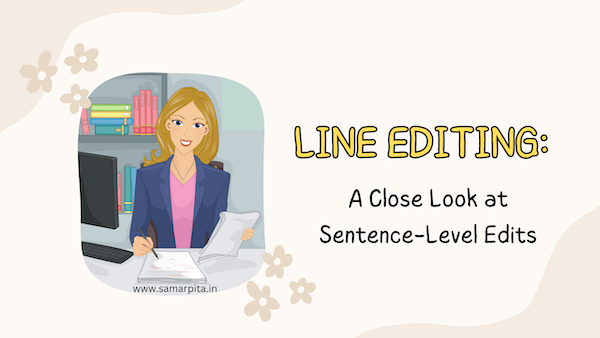Line editing, also known as sentence-level editing, is an important step in the editing process that focuses on the finer details of writing. This type of editing is done at the sentence level, and involves reviewing each sentence for clarity, conciseness, and flow. In this blog post, we’ll take a close look at line editing and how it can improve your writing.
Also Read: Killing Your Darlings: The Art of Cutting Unnecessary Words
What is Line Editing?
Line editing is the process of reviewing each sentence in a piece of writing to ensure that it is clear, concise, and flows smoothly. This type of editing focuses on the finer details of writing, including sentence structure, word choice, punctuation, and grammar. Line editing is typically done after the larger issues, such as plot and character development, have been addressed.
Why is Line Editing Important?
Line editing is important because it can improve the overall quality of your writing. Here are some specific reasons why line editing is important:
Also Read: Journaling for Writers: Using Daily Reflection to Boost Creativity
- Improves Clarity: By reviewing each sentence for clarity, line editing can help to ensure that your message is conveyed clearly and effectively.
- Enhances Flow: Line editing can help to ensure that your writing flows smoothly from sentence to sentence, making it more enjoyable to read.
- Increases Conciseness: Line editing can help to eliminate unnecessary words and phrases, making your writing more concise and to the point.
- Enhances Readability: By improving the clarity, flow, and conciseness of your writing, line editing can make your writing more readable and engaging for your audience.
Also Read: In-Depth Editing: Strategies for Comprehensive Reviews
Tips for Line Editing
Here are some tips to help you with your line editing:
- Read Your Writing Aloud: Reading your writing aloud can help you identify areas where your sentences are awkward or unclear.
- Use Active Voice: Active voice is typically more engaging and easier to read than passive voice. Look for opportunities to use active voice in your writing.
- Eliminate Unnecessary Words: Look for words or phrases that don’t add anything to your writing, such as “very” or “really”. Eliminating these unnecessary words can make your writing more concise and impactful.
- Vary Your Sentence Structure: Varying your sentence structure can help to keep your writing engaging and prevent it from becoming monotonous.
- Check for Punctuation and Grammar Errors: Line editing involves reviewing your writing for punctuation and grammar errors, such as comma splices or subject-verb agreement errors.
In conclusion, line editing is an important part of the editing process that can improve the overall quality of your writing. By reviewing each sentence for clarity, flow, and conciseness, you can create a piece of writing that is engaging, readable, and impactful. By reading your writing aloud, using active voice, eliminating unnecessary words, varying your sentence structure, and checking for punctuation and grammar errors, you can ensure that your writing is the best it can be.
This post is part of #BlogchatterA2Z challenge
***
If you are looking for an excellent manuscript editor, someone to create content for your business, or an expert to help build your personal or professional brand on social media, then look no further and connect with me at editor@samarpita.in I can be followed on instagram at @samarpita and on twitter at @samarpitadotin.
***********
Read my ebook WRITE. EDIT. PROMOTE. to learn the basics about becoming an author – from writing your own book, to editing your first draft, and to promoting your book yourself! You can also read my ebook How To Write A Story Effectively and learn some valuable lessons about how a story can go from average to extraordinary. This book is part 1 of the series.
In fiction, I have two short stories for children in an ebook called Bedtime Stories.

